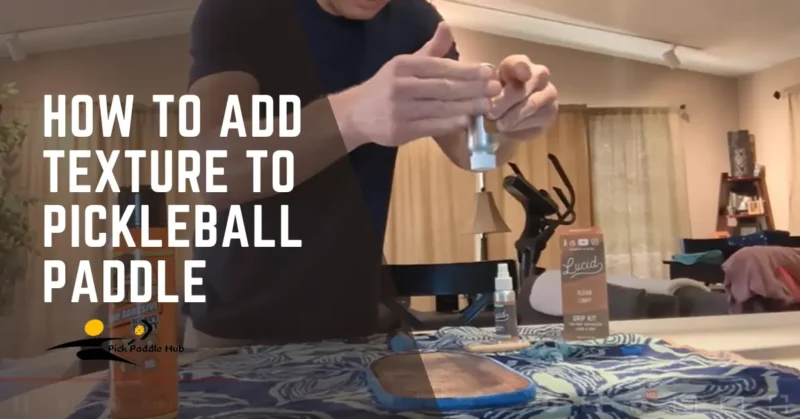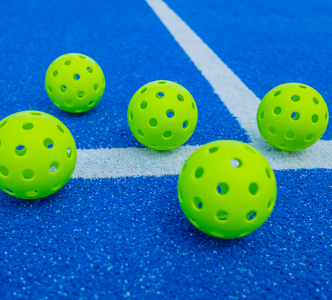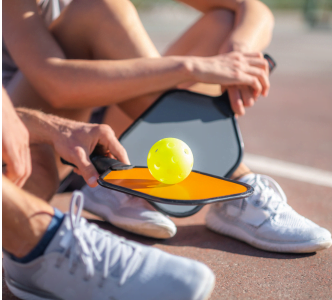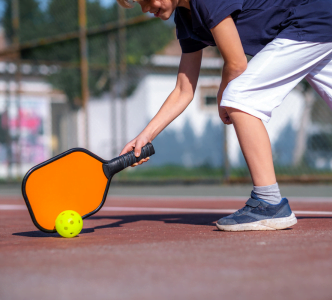Ever thought about making your pickleball paddle even cooler and better at the game? Well, you will learn how to add texture to pickleball paddle and also the rules, Pros & cons, materials, and prohibited modifications in this guide. Your paddle is one of the most important gear in pickleball, it’s not just about making it look cool, it’s about making it play cool too.
I play pickleball and also I added grit/texture to my pickleball paddle many times and it helped me, So that’s why today I can surely say that, when your paddle has the right texture, it can hit the ball in a way that’s harder for others to predict and return.
This little trick can up your game and make playing pickleball even more fun. So, let’s dive into how adding grit or texture to your pickleball paddle can make a big difference in your game!
I also share a step-by-step process of adding grit to a pickleball paddle hope it will help.
With a little DIY paddle customization, you can take your pickleball game to the next level!
Understanding Pickleball Paddle Texture
Alright, let’s talk about pickleball paddle texture and why it’s a game-changer. Imagine the surface of your paddle is like the sole of your favourite sneakers. Just like how different patterns on your shoes help you grip the ground better, the texture on your paddle helps you control the ball better.
It’s all about making the ball spin and move in sneaky ways that can surprise your opponent.
Now, before the customization of the pickleball paddle, there’s something important to know. The USAPA, which is like the big boss of pickleball rules, has some strict guidelines on how rough or bumpy your paddle can be.
They don’t want the game to turn into a magic show with the ball doing wild tricks. So, they say your paddle’s texture can’t be too crazy. It should help with the game but not make the ball do the impossible. Keeping your paddle’s texture within these rules makes sure the game is fun and fair for everyone.
Why Add Texture to Your Paddle?
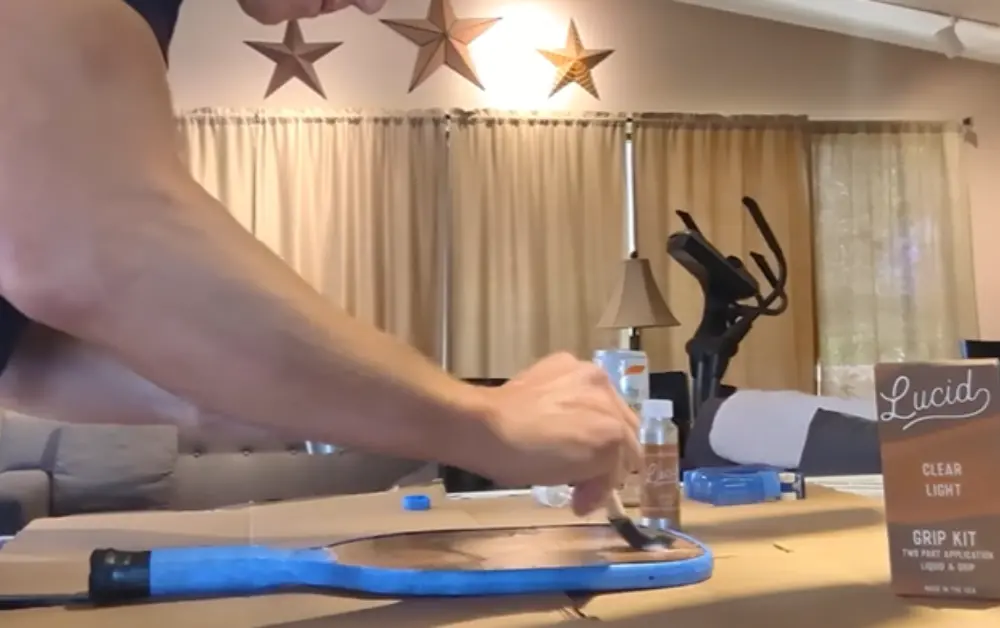
Adding texture to your pickleball paddle isn’t just about making it look unique, it’s a game-changer in how you play! let’s dive into why a little texture can go a long way.
improving paddle Grip and Control
First off, a textured paddle surface can significantly enhance your grip on the paddle. This means when you swing, the paddle is less likely to slip or twist in your hand, giving you much more control over where your shots land. Imagine playing in hot, sweaty conditions or during a drizzle; that extra grip can be the difference between a winning shot and a miss.
Enhanced Spin
Textured paddles aren’t just about grip; they’re about putting some serious spin on the ball. The rough surface grabs onto the ball just a tad longer, allowing you to impart more spin. This can make your shots more unpredictable and challenging for your opponents to return.
Stability and Maneuverability
When it comes to fast-paced exchanges at the net, a paddle with the right texture can offer better stability and manoeuvrability. It’s all about the feel of the paddle in your hand and how confidently you can move it to meet the ball. A textured surface can reduce the impact shock on your paddle, making it easier to control and position quickly for those critical shots.
Compliance with Regulations
It’s important to note that while adding texture can offer these benefits, any modifications must comply with USAPA regulations. The rules specify limits on surface roughness to ensure fair play. So, while customizing your paddle, keeping within these guidelines ensures your paddle is tournament-legal.
Materials and Tools Needed for Pickleball Paddle Customization
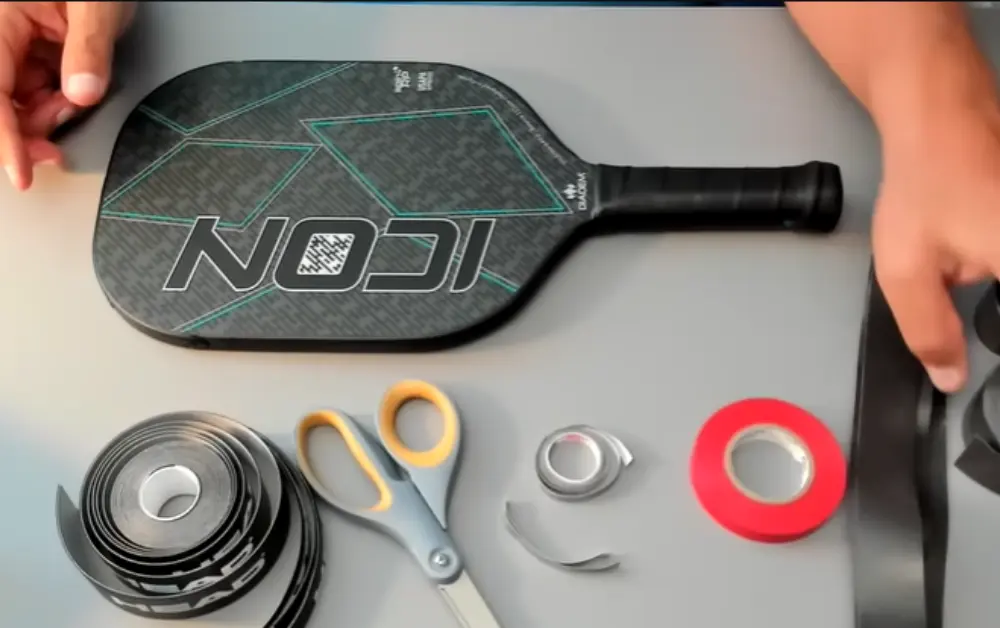
Adding pickleball paddle texture can be a game-changer, whether you’re just starting or you’ve been playing for years. To make sure you get it right and follow the rules, you’ll need some specific materials and tools. Here’s what you’ll need:
Approved Materials:
- Sandpaper or Emery Cloth: This is used to gently roughen the surface of your paddle to add texture. Make sure to choose a grade that’s effective without damaging the paddle.
- Textured Overlays: Some players prefer using approved overlays that stick onto the paddle surface. These can range from rubberized materials to textured films.
- Epoxy or Resin: For a more permanent texture, some advanced techniques involve applying a thin layer of epoxy or resin mixed with a texturing agent.
Tools Required:
- Clean Cloth: To clean the paddle surface before applying any texture.
- Protective Gloves: Especially if you’re working with chemicals like epoxy.
- Brush or Roller: If you’re applying epoxy or resin, you’ll need a small brush or roller for an even coat.
- Precision Knife: For cutting overlays to the exact size of your paddle face.
- Measuring Tape or Ruler: To measure overlays and ensure they fit perfectly on your paddle.
How to Add Texture to Pickleball Paddle: Step-by-Step Guide
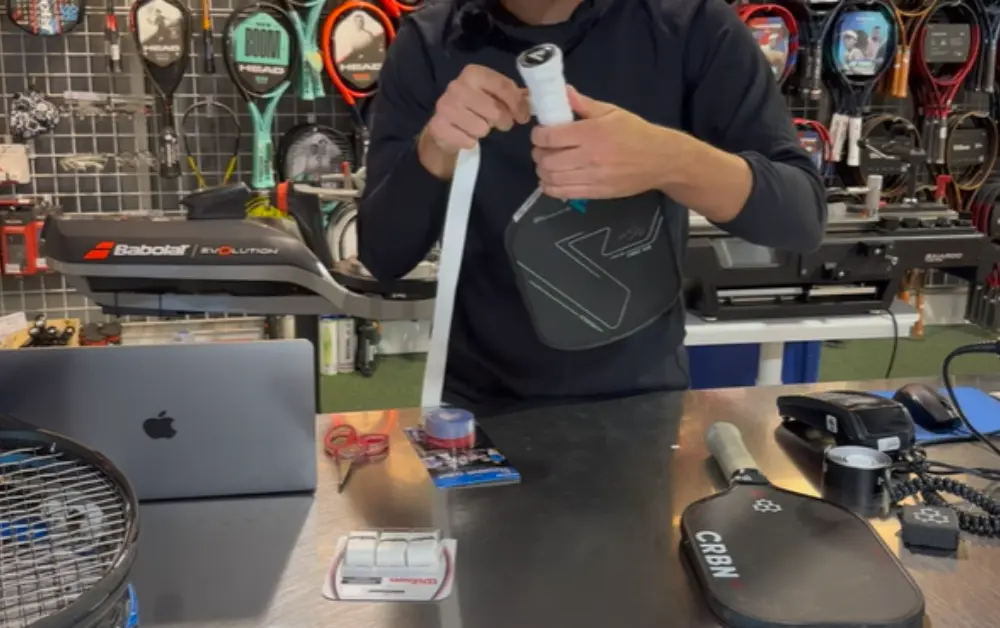
Adding texture to your pickleball paddle can help improve grip, control, and the overall feel of your paddle. Here’s a detailed guide to help you through the process, ensuring your paddle not only meets your needs but also complies with USAPA standards.
1. Preparing Your Paddle
Cleaning the Surface
Start with a clean slate. Use a mild soap and water solution to gently clean the surface of your paddle, removing any dirt or oils. Dry it thoroughly with a soft cloth to ensure the texture materials adhere properly.
Choosing the Right Texture Material
Select a textured material that enhances grip and control without violating USAPA regulations. Materials like textured paint or specific adhesive tapes designed for paddles are great options. Ensure the material is approved for use in pickleball paddles to maintain compliance with regulations.
2. Applying Lead Tape for Weight and Texture
Placement Strategies for Balance and Grip
Adding lead tape can alter the weight distribution of your paddle, affecting balance and grip. Place the tape strategically on areas where you want to increase weight or modify the balance. Common areas include near the handle for improved grip or along the edges for enhanced stability.
Tips for Securing the Tape
Ensure the lead tape is securely attached to the paddle. Press down firmly along the length of the tape, removing any air bubbles. If necessary, use a heat gun at a low setting to gently warm the tape, making it more pliable and ensuring better adhesion to the paddle surface.
3. Enhancing Grip with Grip Tape
Types of Grip Tape and Their Benefits
Grip tape comes in various textures and thicknesses, each offering different benefits. A thicker grip tape can provide a softer feel, reducing hand fatigue, while a thinner tape might offer more direct feedback from the paddle. Textured grip tapes can also increase the friction between your hand and the handle, improving your grip during play.
Wrapping Techniques for Optimal Performance
Start wrapping the grip tape at the base of the handle, working your way up. Overlap each layer slightly to ensure complete coverage. For the best grip, consider wrapping in a pattern that aligns with your grip style, whether it’s overhand or underhand. Finish off by securing the end of the tape with a small piece of adhesive tape or a specially designed clamp that comes with some grip tapes.
4. Customization Options
Ideas for Personalizing Your Paddle’s Look and Feel
Beyond functional improvements, adding texture to your paddle is an opportunity to personalize its appearance. Use coloured tape, stencils, or even custom decals to add a personal touch or put your name on pickleball paddle. Just remember, any decorative elements should not interfere with the paddle’s texture or the ball’s movement.
Compliance with USAPA Standards for Customization
While applying pickleball paddle texture, keep USAPA standards in mind. The surface of the paddle must be free of any features that allow a player to impart additional spin on the ball. The texture must be uniform and not exceed a certain roughness limit. Always check the latest USAPA regulations to ensure your paddle meets the requirements for official play.
How To Add Grit To Pickleball Paddle? Step-by-Step Process
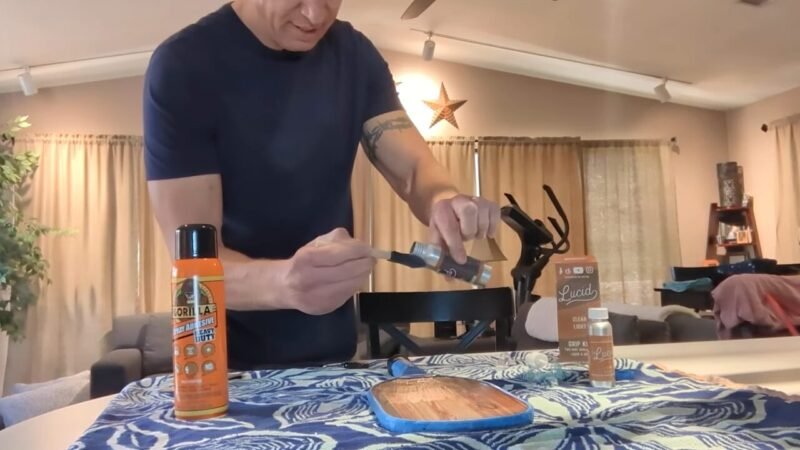
Adding grit to a pickleball paddle is a popular way to enhance its surface texture, improving grip and control over the ball. Here’s a straightforward guide on how to do it:
Materials Needed for Adding Grit to Pickleball Paddle
- Fine sandpaper or a sanding sponge (220 grit or higher)
- Grit additive (specifically designed for pickleball paddles or similar sports equipment)
- Clear epoxy or paddle coating solution
- Paintbrush or sponge applicator
- Masking tape
- Cleaning cloth
- Isopropyl alcohol or paddle cleaner
Step-by-Step Guide for Adding Grit to Paddle
- Prepare the Paddle:
- Clean the paddle surface with a cloth and isopropyl alcohol to remove any dirt, oil, or debris. Allow it to dry completely.
- Use masking tape to cover the edge guard and handle of the paddle to protect them from the grit mixture.
- Sand the Surface (Optional):
- Lightly sand the paddle’s hitting surface with fine sandpaper or a sanding sponge. This step is optional but can help the epoxy and grit mixture adhere better.
- Wipe the surface clean of any dust resulting from sanding.
- Mix Grit Additive with Epoxy:
- In a mixing container, combine the clear epoxy or paddle-coating solution with the grit additive. Follow the manufacturer’s recommendations for the ratio of epoxy to grit.
- Mix thoroughly until the grit is evenly distributed throughout the epoxy.
- Apply the Grit Mixture:
- Using a paintbrush or sponge applicator, apply a thin, even layer of the grit mixture over the paddle’s surface. Ensure the entire surface is covered uniformly.
- Avoid applying too much pressure or too thick a layer, as this can result in an uneven surface or affect the paddle’s performance.
- Let It Dry:
- Allow the paddle to dry horizontally for the time recommended by the epoxy manufacturer, usually several hours to overnight. This ensures the mixture sets correctly and adheres to the paddle surface.
- Remove Masking Tape:
- Once the epoxy and grit mixture is completely dry, carefully remove the masking tape from the edge guard and handle.
- Final Touches:
- Inspect the paddle for any uneven areas or excess grit. If necessary, lightly sand any rough edges to smooth them out, being careful not to remove too much of the added texture.
Tips:
- Test First: If possible, test the grit mixture on a small, inconspicuous area of the paddle to ensure it provides the desired texture and adherence.
- Safety Precautions: Wear protective gloves and a mask when handling epoxy and sanding the paddle to avoid skin irritation and inhalation of dust.
- Follow USAPA Guidelines: Ensure the modifications comply with the USAPA regulations regarding paddle surface roughness and texture to remain eligible for official play.
Prohibited Modifications: Navigating USAPA Regulations
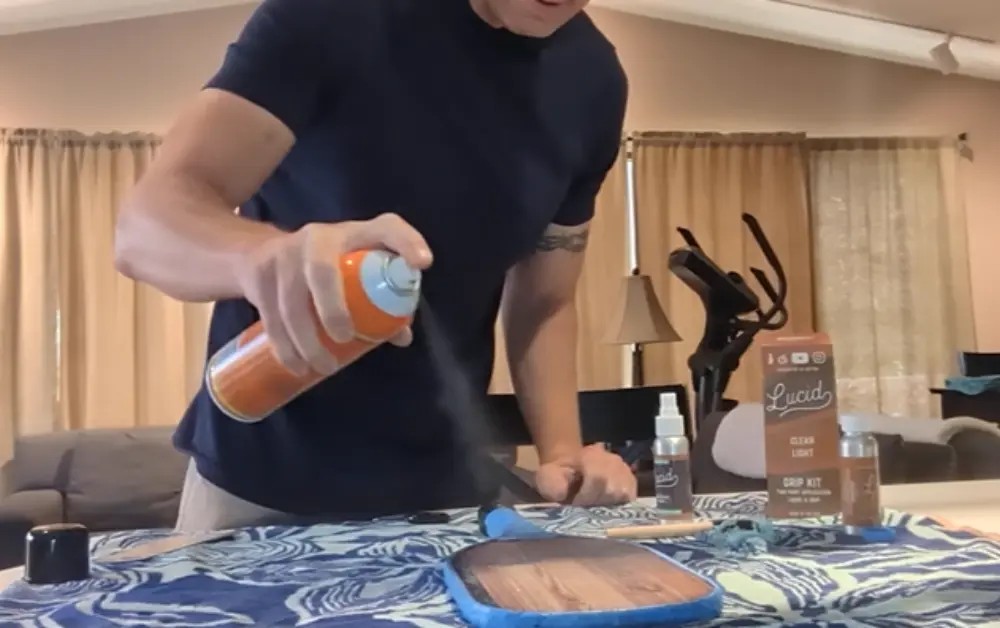
When customizing your pickleball paddle, it’s crucial to stay within the boundaries set by the USA Pickleball Association (USAPA) to ensure your paddle is legal for official play. Here’s a breakdown of modifications that are off-limits according to USAPA regulations and how they could unfairly impact gameplay.
List of Prohibited Modifications
While there are differences between pickleball paddles some of prohibited and some legal, also in Modifications include:
- Surface Roughness: Adding excessive roughness or any textured material that exceeds the USAPA’s limit on surface roughness is prohibited. This includes applying substances or materials that create a surface capable of imparting additional spin on the ball beyond what is possible with standard equipment.
- Reflective or Glare-Causing Materials: Using paints, tapes, or any finishes that cause glare and could distract opponents or impair their ability to see the ball is not allowed.
- Mechanical Aids: Attaching any mechanical aids to the paddle, which could assist in hitting the ball, altering the ball’s trajectory, or enhancing spin beyond the player’s natural ability, is strictly forbidden.
- Electronic Devices: Incorporating electronic devices that emit sounds or lights, or provide feedback on the play, into the paddle is not permitted during official games.
- Alteration of Size or Shape: Modifying the paddle to exceed the maximum length or width dimensions specified by the USAPA regulations is illegal. This includes extending the handle length or altering the paddle’s hitting surface in any way that deviates from its original manufactured state.
Impact on Gameplay
These modifications can significantly affect gameplay, offering an unfair advantage to the player using the modified paddle. For instance:
- Excessive Surface Roughness: A paddle with too much texture can grip the ball unusually, making it difficult for opponents to predict or react to the ball’s spin and speed, disrupting the fairness of play.
- Glare-Causing Materials: Glare from a paddle can momentarily blind opponents during crucial points, giving the paddle’s user an unfair advantage.
- Mechanical Aids and Electronic Devices: These can enhance a player’s performance artificially, making the game more about the equipment than skill and strategy.
- Size or Shape Alterations: Changing the paddle’s dimensions could affect the game’s dynamics, such as reach and coverage, providing an undue advantage over opponents adhering to standard equipment sizes.
Maintaining Your Textured Paddle
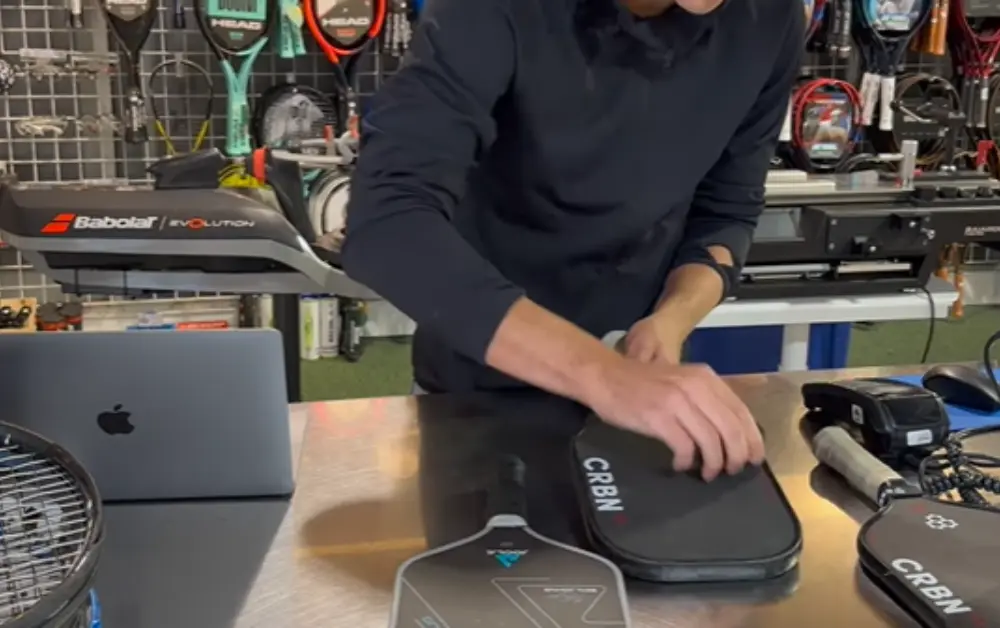
Once you’ve customized your pickleball paddle with added texture, maintaining it properly will ensure it continues to perform at its best. Here are some tips for keeping your textured paddle in top condition, along with advice on when to reapply or adjust modifications.
Tips for Cleaning and Preserving the Added Texture
- Regular Cleaning: After each use, wipe down your paddle with a soft, damp cloth to remove dirt, sweat, and oils that can accumulate on the surface. Avoid using harsh chemicals or abrasive materials that could damage the texture.
- Deep Cleaning: Occasionally, your paddle may require a more thorough cleaning to maintain its texture. Use a mild soap and water solution, gently scrubbing the textured areas with a soft brush or cloth. Rinse thoroughly and allow the paddle to air dry.
- Protecting the Texture: To preserve the added texture, store your paddle in a cool, dry place away from direct sunlight when not in use. Consider using a paddle cover to protect the surface from scratches and dings that could affect the texture.
- Avoiding Moisture Damage: While cleaning your paddle with water is recommended, prolonged exposure to moisture can damage both the paddle and the added texture. Ensure your paddle is completely dry before storing it.
When to Reapply or Adjust Modifications
- Monitoring Wear and Tear: Regularly inspect your paddle for signs of wear, especially in areas with added texture or modifications. If the texture begins to smooth out or the modifications show signs of peeling or cracking, it may be time to reapply.
- Adjusting for Performance: As you play and become more familiar with your paddle, you might find that adjusting the placement or type of texture can improve your performance. Experimenting with different textures and modifications can help you find the perfect setup for your playing style.
- After Deep Cleaning: Some textures or modifications may not withstand deep cleaning and could require reapplication. After cleaning your paddle, assess the condition of the texture and any modifications to determine if they need to be reapplied.
- Compliance with Regulations: If the USAPA updates its regulations regarding paddle modifications, review your paddle to ensure it remains compliant. Adjustments may be necessary to meet new standards.
Pros and Cons of Adding Texture to Pickleball Paddles
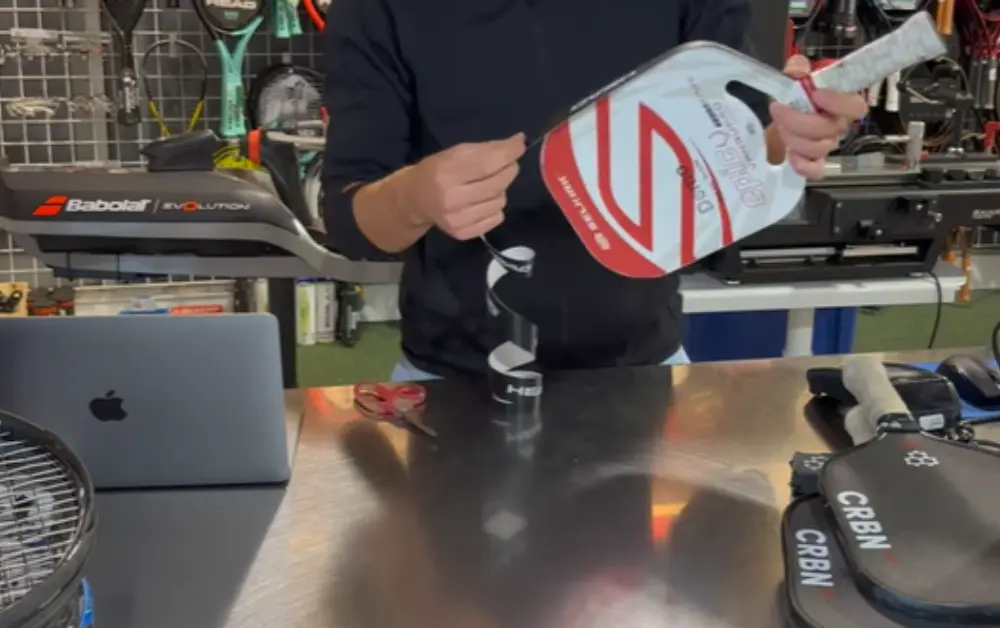
Here’s a table summarizing the pros and cons of adding texture to your pickleball paddle:
| Advantages | Disadvantages |
|---|---|
| Improved Grip – Enhanced grip on the paddle, reducing slippage during play. | Potential for Wear – Textured surfaces may wear down over time, requiring maintenance or replacement. |
| Increased Ball Control – Offers more control over the ball for precise shots and spins. | Difficulty in Cleaning – Textured surfaces can be harder to clean, with dirt and grime getting lodged in the crevices. |
| Enhanced Spin – Allows for better spin on the ball, making shots more challenging for opponents. | Risk of Non-Compliance – Modifications could lead to non-compliance with USAPA regulations, affecting tournament play. |
| Personalization – Enables customization of the paddle for a personal touch in both playability and aesthetics. | Adjustment Period – Some players may need time to adjust to the feel of a textured paddle, which could temporarily affect performance. |
| Increased Ball Wear – Textured paddles can cause more wear on balls, potentially leading to higher replacement costs. |
Conclusion
Adding texture to your pickleball paddle offers numerous benefits, including improved grip, enhanced ball control, and the ability to impart more spin on your shots. These modifications can significantly elevate your game, providing a competitive edge that aligns with both beginner and advanced player techniques. However, it’s crucial to approach paddle customization with an understanding of USAPA regulations to ensure your paddle remains tournament-legal.
We encourage you to experiment with adding texture to their paddles, exploring the various materials and methods available within the guidelines. This exploration not only allows for a personalized playing experience but also deepens your understanding of how equipment can influence gameplay.
FAQ’s
Will adding texture to my paddle make it illegal for tournament play?
Not necessarily. The USAPA (USA Pickleball Association) has specific regulations regarding paddle surface texture. As long as the modifications do not make the paddle surface excessively rough and comply with the USAPA’s standards for surface roughness and texture, your paddle should remain legal for tournament play. Always check the latest USAPA guidelines to ensure compliance.
Can adding texture to a paddle wear out the ball faster?
Yes, paddles with added texture can increase the wear on pickleball balls due to the enhanced grip and spin they provide. While this might lead to balls wearing out slightly faster, many players find the improved control and game performance worth the trade-off.
Is it possible to add texture to any type of paddle?
Most paddles can be modified to add texture, but the process and effectiveness can vary depending on the paddle’s original surface material. Composite and graphite paddles are generally the easiest to modify, while wooden paddles might not take to the modifications as well. Always consider the base material of your paddle before proceeding.
How often will I need to reapply or maintain the added texture?
The durability of the added texture depends on the materials used, the frequency of play, and how well the paddle is maintained. Generally, textured surfaces may need to be refreshed every few months to maintain optimal performance. Regularly inspect your paddle for wear and reapply texture as necessary.
Does adding texture to a paddle improve grip?
Adding texture directly to the paddle’s surface can enhance your control over the ball but doesn’t directly affect the grip on the handle. For improved grip on the handle, consider using grip tape or an overgrip designed for pickleball paddles.
Can I add texture to my paddle myself, or should I have it done professionally?
Many players successfully add texture to their paddles using DIY methods. However, if you’re unsure about the process or concerned about maintaining compliance with USAPA regulations, consulting a professional or purchasing a paddle already designed with the desired texture might be preferable.

